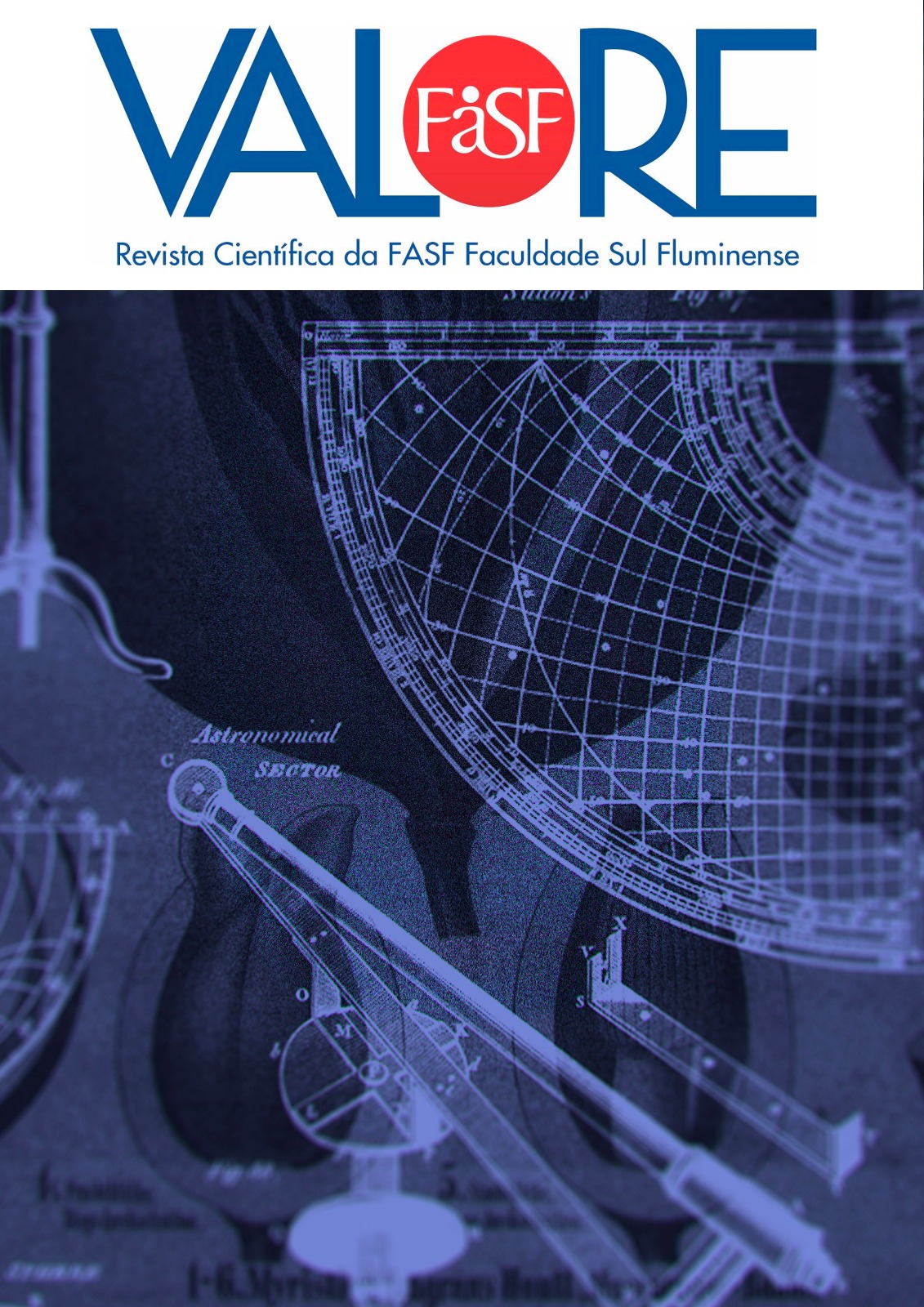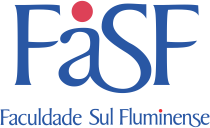Estudo e análise para difusão do Modelo de Referência em Operações da Cadeia de Suprimentos (SCOR) nas universidades e organizações
DOI:
https://doi.org/10.22408/reva502020266e-5007Resumo
As organizações são pressionadas a melhorar constantemente seus processos organizacionais, buscando construir vantagens competitivas duradouras. Estudos tem demonstrado que um dos processos que ajudam na construção de vantagens competitivas duradouras é o gerenciamento da cadeia de suprimentos. Um dos modelos utilizados para gerenciar a cadeia de suprimentos, defendido e discutido na literatura internacional, é o Modelo de Referência em Operações da Cadeia de Suprimentos (SCOR). Percebe-se, porém, que este modelo é pouco difundido para a realidade brasileira nas instituições de ensino e nas organizações. Este artigo tem como objetivo principal analisar o Modelo SCOR e suas aplicações para contribuir com a difusão do modelo no país. Para isso foi realizado um levantamento exploratório nas ementas das disciplinas de gestão de operações, logísticas e afins do curso de graduação em administração das universidades federais do Brasil, e análise com gestores da área sobre o domínio e aplicação do Modelo SCOR.
Downloads
Referências
ABOLGHASEMI, M.; KHODAKARAMI, V.; TEHRANIFARD, H. A new approach for Supply Chain Risk Management: mapping SCOR into Bayesian network. Journal of Industrial Engineering and Management, v. 8, n. 1, p. 280-302, 2015.
ABRIZAH, A.; ZAINAB, A. N.; KIRAN, K.; RAJ, R. G. LIS journals scientific impact and subject categorization: a comparison between Web of Science and Scopus, Scientometrics, v. 94, n. 2, p. 721-740, 2013.
AYDM, S. D.; ERYURUK, S. H.; KALAOGLU, F. Evaluation of the performance attributes of retailers using the SCOR model and AHP: a case study in the Turkish clothing industry. Fibres e Textils International Journal, v. 5, n. 22, p. 14-19, 2014.
BAR-ILAN, J. Citations to the ‘‘Introduction to informetrics’’ indexed by WOS, Scopus and Google Scholar, Scientometrics, v. 82, n. 3, p. 495-506, 2010.
BOYSON, S. Cyber supply chain risk management: Revolutionizing the strategic control of critical IT systems. Technovation, v. 34, n. 1, p. 342–353, 2014.
BRINDLEY, B. R. C. Supply Chain Risk Management and Performance: a guiding framework for future development. International Journal of Operations and Production Management, v. 27, n. 3, p.303-322, 2007.
CAGLIANO, A. C.; DE MARCO, A.; GRIMALDI, S.; RAFELE, C. An integrated approach to supply chain risk analysis. Journal of Risk Research, v. 15, n. 7, p. 817-840, 2014.
CAMARGO, E. M.; ZANANDREA, G.; PACHECO, M. T. M.; MALAFAIA, G. C.; MOTTA, M. E. V. Supply chain management operations reference (SCOR): study bibliometric. International Journal of Operational Logistics Management, v. 2, n. 4, p. 1-13, 2013.
CHADEGANI, A. A.; SALEHI, H.; YUNUS, M. M.; FARHADI, H.; FOOLADI, M.; FARHADI, M.; EBRAHIM, N. A. A Comparison between Two Main Academic Literature Collections: Web of Science and Scopus Databases. Asian Social Science, v. 9, n. 5, p. 1911-2025, 2013.
CHENG, J. C. P.; LAW, K. H.; BJORNSSON, H.; JONES, A.; SRIRAM, R. D. Modeling and monitoring of construction supply chains. Advanced Engineering Informatics, v. 1, n. 24, p. 435–455, 2010.
DÍAZ, A. Contribución al Control de Gestión em la Dirección Territorial de ETECSA en Villa Clara. Universidad Central Marta Abreu de las Villas –UCLV, 2009.
DELIPINAR, G. E.; KOCAOGLU, B. Using SCOR model to gain competitive advantage: A Literature Review. Procedia - Social and Behavioral Sciences, v. 229, n. 1, p. 398 – 406, 2016.
FERRELL, O. C.; FERRELL, L. Ethics and Social Responsibility in Marketing Channels and Supply Chains: An Overview. Journal of Marketing Channels, v. 23, n. 2, p. 2-10, 2016.
FONTALVO-HERRERA, T. J.; CARDONA-ROJAS, D.; MORELOS, J. Aplicación del modelo SCOR para El servicio de limpieza de contenedores tanque (isotanks). Revista Dimensión Empresarial, v. 12, n. 2, p. 59-68, 2014.
GEORGISE, F. B.; THOBEN, K. D.; SEIFERT, M. Implementing the SCOR Model Best Practices for Supply Chain Improvement in Developing Countries. International Journal of u- and e- Service, Science and Technology, v. 6, n. 4, p. 13-27, 2013.
GIANNAKIS, M. Management of service supply chains with a service oriented reference model: the case of management consulting. Supply Chain Management: An International Journal, v. 16, n. 5, p. 346-361, 2011.
GOVINDU, R.; CHINNAM, R. B. MASCF: A generic process-centered methodological framework for analysis and design of multi-agent supply chain systems. Computers & Industrial Engineering, v. 53, n.1, p. 584–609, 2007.
GULLEDGE, T.; CHAVUSHOLU, T. Automating the construction of supply chain key performance indicators. Industrial Management & Data Systems, v. 108, n. 6, p. 750-774, 2008.
HANDFIELD, B.; NICHOLS; NICHOLS, E. R. L. Supply chain redesign: transforming supply chains into integrated value systems. Pearson Education, New Jersey: Financial Times Prentice Hall, 2002.
HENDRICKS, K. B.; SINGHAL, V. R.; ZHANG, R. The effect of operational slack, diversification and vertical relatedness on the stock market reaction to Supply Chain disruptions. Journal of Operations Management, v. 27, n. 1, p. 233–246, 2009.
HUANG, S.H.; SHEORAN, S. K.; KESKAR, H. Computer-assisted supply chain configuration based on supply chain operations reference (SCOR) model. Computers & Industrial Engineering, v. 48, n. 1, p. 377–394, 2005.
HWANG, Y. D.; LIN, Y. C.; LYU JÚNIOR, J. The performance evaluation of SCOR sourcing process - the case study of Taiwan`s TFT-LCD industry. International Journal of Production Economics, v. 1, n. 115, p. 411-423, 2008.
KERN, D.; MOSER, R.; HARTMANN, E.; MODER, M. Supply Risk Management: model development and empirical analysis. International Journal of Physical Distribution and Logistics Management, v. 42, n. 1, p. 60-82, 2012.
KHAN, O.; BURNES, B. Risk and Supply Chain Management: Creating a Research Agenda. The International Journal of Logistics Management, v. 18, n. 2, p. 197-216, 2007.
LAMBERT, D. M.; COOPER, M. C. Issues in Supply Chain Management. Industrial Marketing Management, v. 29, n. 99, p. 65–83, 2000.
LEPORI, E.; D. DAMAND, D.; BARTH, B. Benefits and limitations of the SCOR model in warehousing. International Federation of Automatic Control, v. 1, n.1, p. 19-21, 2013.
LIMA JUNIOR, F. R.; CARPINETTI, L. C. R. Combining SCOR model and fuzzy TOPSIS for supplier evaluation and management. International Journal of Production Economics, v. 174, n. 1, p. 128–141, 2016.
LOCKAMY, A.; MCCORMACK, K. Linking SCOR planning practices to supply chain performance. International Journal of Operations and Production Management, v. 12, n. 24, p. 1192-1218, 2004.
MCCORMACK, K.; WILKERSON, T.; MARROW, D.; DAVEY, M.; SHAH, M.; YEE, D. Managing Risk in Your Organization with the SCOR Methodology. The Supply Chain Council Risk Research Team, v. 1, n.1, p. 1-32, 2008.
MENTZER, J. T.; DEWITT, W.; KEEBLER, J. S.; MIN, S.; NIX, N. W.; SMITH, C. D.; ZACHARIA, Z. G. Defining supply chain management. Journal of Business Logistics, v. 22, n. 2, p. 1–25, 2001.
MONGEON, P.; PAUL-HUS, A. The journal coverage of Web of Science and Scopus: a comparative analysis, Scientometrics, v. 106, n. 1, p. 213-228, 2016.
ONODA, D. H. Proposta de Processo de Gestão de Riscos Aplicado à Função de Compra. Escola Politécnica da Universidade de São Paulo, 2009.
PERSSON, F. SCOR template – A simulation based dynamic supply chain analysis tool. International Journal of Production Economics, Elsevier, v. 131, n. 1, p. 288-294, 2011.
PERSSON, F.; ARALDI, M. The development of a dynamic supply chain analysis tool — Integration of SCOR and discrete event simulation. International Journal Production Economics, v. 121, n. 1, p. 574–583, 2009.
RAMEZANI, M.; BASHIRI, M.; TAVAKKOLI-MOGHADDAM, R. A robust design for a closed-loop supply chain network under an uncertain environment. International Journal of Advanced Manufacturing Technology, v. 66, n. 1, p. 825–843, 2013.
ROTARU A. E.; SHRESTHA P. M.; LIU F.; MARKOVAITE B.; CHEN S.; NEVIN K. P.; et al. Direct interspecies electron transfer between Geobacter metal ireducens and Methanosarcinabarkeri. Application Environments and Microbiology, v. 80, n.1, p. 4599–4605, 2014.
SANGARI, M. S.; REZA, H.;ZAHEDI, M. R. The impact of knowledge management processes on supply chain performance. International Journal of Logistics Management, v. 26, n. 3, p. 603-626, 2015.
SCHMITZ, P. The Use of Supply Chains and Supply Chain Management in the Production of Forensic Maps Using Data from a Fraud Case. South African Journal of Geomatics, v. 5, n. 2, p. 156-175, 2016.
SELLITTO, M. A.; MENDES, L. W. Avaliação comparativa do desempenho de três cadeias de suprimentos em manufatura. Produção, v. 16, n. 3, p. 552-568, 2006.
SHU, T.; CHEN, S.; WANG, S.; LAI, K. K. GBOM-Oriented Management of Production Disruption Risk and Optimization of Supply Chain Construction. Expert Systems with Applications, v. 41, n. 1, p. 58-68, 2014.
SOFFER, P.; WAND, Y. Goal-Driven Analysis of Process Model Validity. Biomedical sciences instrumentation, v. 30, n. 84, p. 521-535, 2004.
STEWART, G. Supply-chain operations reference model (SCOR): the first cross-industry framework for integrated supply-chain management. Logistics Information Management, v. 10, n. 2, p. 62–67, 1997.
Supply Chain Council – SCC. Supply Chain Operations Reference Model SCOR, version 11, United States of America, 2012.
VIDAL, G. H.; VEGA, J. C. H. Modelo de referencia operacional aplicado a una empresa de servicios de mantenimiento. Revista Venezolana de Gerencia, v. 21, n. 75, p. 549-571, 2016.
VIEIRA, E. S.; GOMES, J. A. N. F. A comparison of Scopus and Web of Science for a typical university. Scientometrics, Vol. 81, n. 2, p. 587-600, 2009.
WU, D.D.; WU,Y. D.; ZHANG,D.L.; OLSON, L. Supply chain outsourcing risk using an integrated stochastic fuzzy optimization approach. Information Science, v. 235, n. 1, p. 242–258, 2013.
Downloads
Publicado
Como Citar
Edição
Seção
Licença
Autores que publicam nesta revista concordam com os seguintes termos:
Autores mantêm os direitos autorais e concedem à revista o direito de primeira publicação;
Autores têm permissão e são estimulados a publicar e distribuir seu trabalho online (ex.: em repositórios institucionais ou na sua página pessoal) já que isso pode gerar alterações produtivas, bem como aumentar o impacto e a citação do trabalho publicado
Em virtude da aparecerem nesta revista de acesso público, os artigos são de uso gratuito, com atribuições próprias, em aplicações educacionais e não-comerciais.












